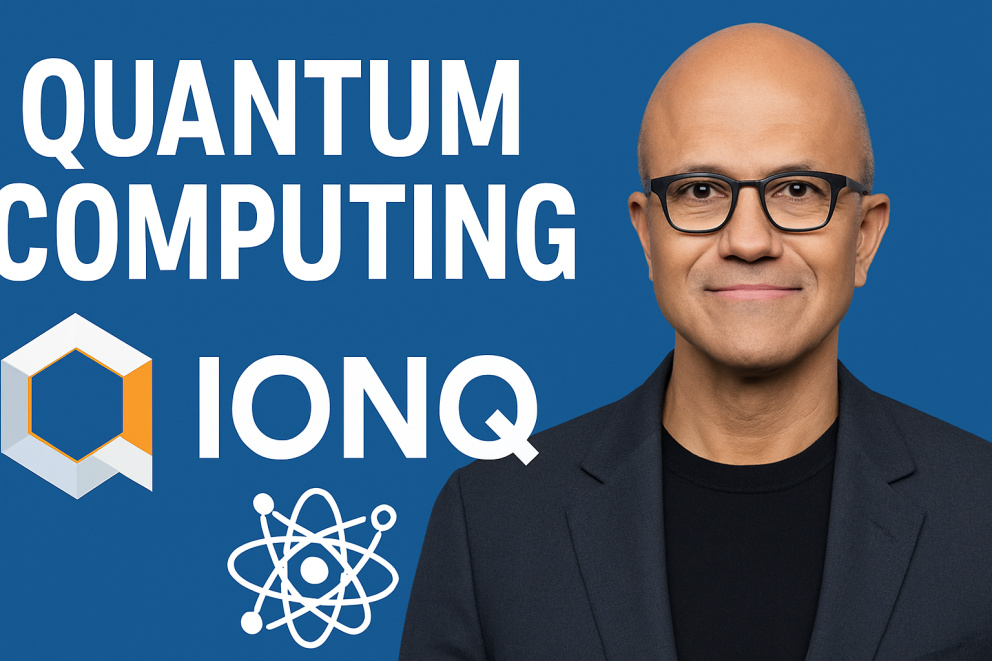Microsoft CEO Announces Major Quantum Computing Breakthrough for IonQ
In a groundbreaking announcement, Microsoft CEO
Satya Nadella revealed a major quantum computing milestone achieved in
partnership with IonQ, a leading quantum hardware company. The
breakthrough—centered around error correction and scalability—could
accelerate the timeline for practical quantum computing by years, positioning
Microsoft and IonQ at the forefront of the next computing revolution.
The
Quantum Leap: What Was Announced?
At Microsoft’s annual Quantum Summit, Nadella
shared that the company, alongside IonQ, has successfully demonstrated:
- A
highly stable, error-corrected quantum processor using
trapped-ion technology.
- A
scalable architecture that could support thousands of qubits
(quantum bits), a critical step toward commercial viability.
- A
10x improvement in qubit coherence time, meaning quantum calculations
can run longer without errors.
This development is particularly significant because error
correction has been one of the biggest hurdles in quantum computing.
Traditional qubits are prone to interference from heat, electromagnetic waves,
and other environmental factors, making them unstable. Microsoft and IonQ’s
approach appears to mitigate these issues more effectively than previous
attempts.
Why This
Matters: The Race for Quantum Supremacy
Quantum computing promises to revolutionize
industries by solving problems that are practically impossible for
classical computers, such as:
- Drug
Discovery & Material Science – Simulating molecular
interactions at an atomic level.
- Cryptography
& Cybersecurity – Breaking (or securing) encryption methods.
- Climate
Modeling – Optimizing carbon capture and energy storage
solutions.
- Financial
Forecasting – Running ultra-complex risk analysis in seconds.
Until now, quantum computers have been too
error-prone and small-scale for real-world applications. Microsoft and
IonQ’s breakthrough suggests we may be closer than ever to fault-tolerant
quantum computing—where quantum machines outperform classical ones in
practical tasks.
How IonQ’s
Trapped-Ion Technology Stands Out
While companies like IBM, Google, and Rigetti rely
on superconducting qubits, IonQ uses trapped-ion qubits, which
offer key advantages:
✔ Higher Stability –
Ions are less susceptible to environmental noise.
✔ Better
Error Rates – Fewer mistakes in calculations compared to
superconducting qubits.
✔ Longer
Coherence Times – Quantum states last longer, enabling more complex
operations.
Microsoft’s expertise in software and
error-correction algorithms complements IonQ’s hardware, making this
partnership a formidable player in the quantum race.
What’s
Next? The Road to Commercial Quantum Computing
Nadella hinted that Microsoft and IonQ are working
toward a fully error-corrected, logical quantum computer within
the next five years. If successful, this could lead to:
- Quantum
cloud services (via Microsoft Azure) for enterprises and
researchers.
- Hybrid
computing models where classical and quantum systems work
together.
- Industry-specific
quantum applications in biotech, finance, and logistics.
Challenges
Ahead
Despite the excitement, hurdles remain:
- Cost –
Quantum systems are still prohibitively expensive.
- Cooling
Requirements – Most quantum computers need near-absolute-zero
temperatures.
- Software
Development – New algorithms are needed to harness quantum power.
However, with this latest breakthrough, Microsoft and IonQ
have taken a major step toward overcoming these barriers.
Final
Thoughts: A New Era of Computing?
Satya Nadella’s announcement signals that practical
quantum computing may no longer be a distant dream. If Microsoft and IonQ
can maintain this momentum, we could see the first real-world quantum
advantage within this decade.









